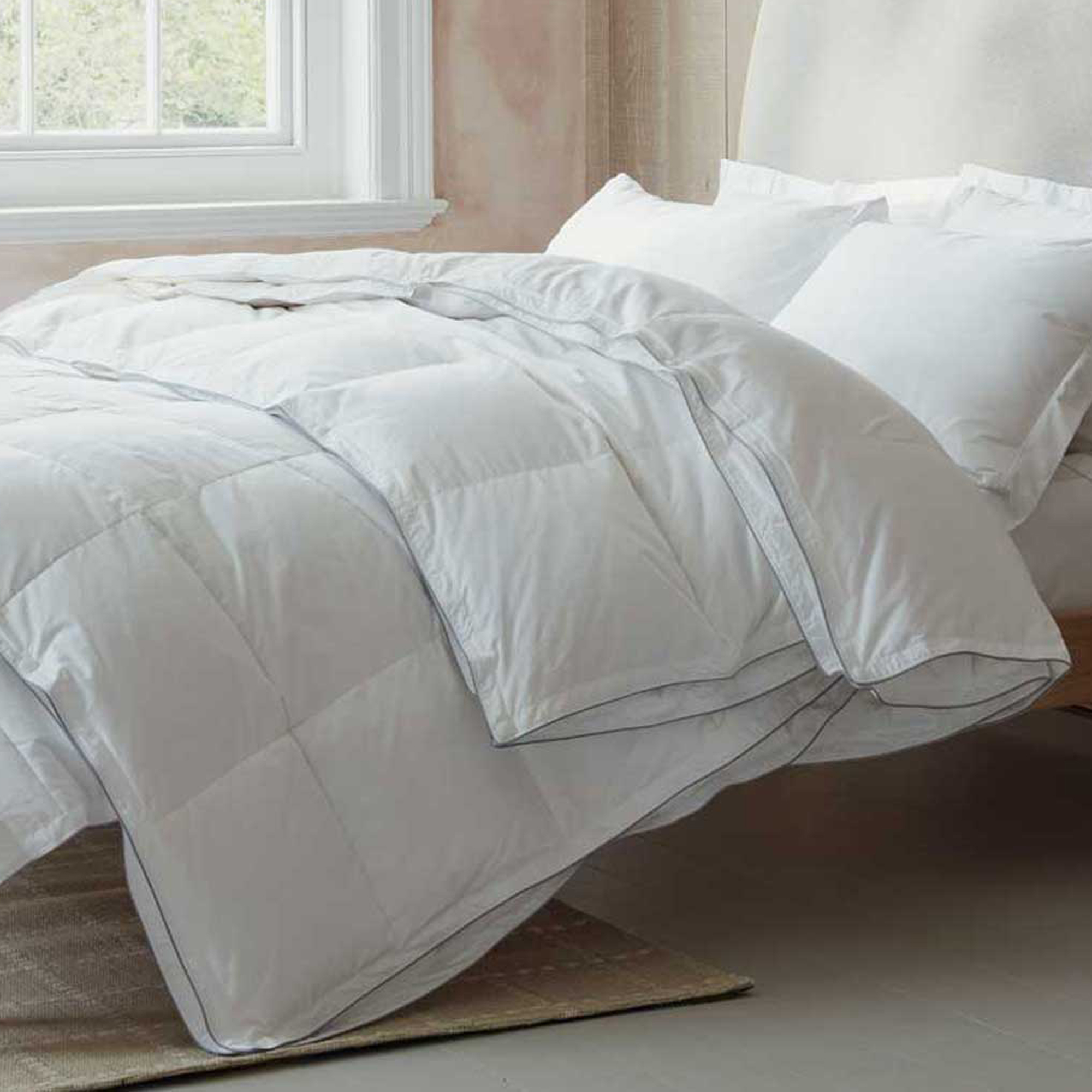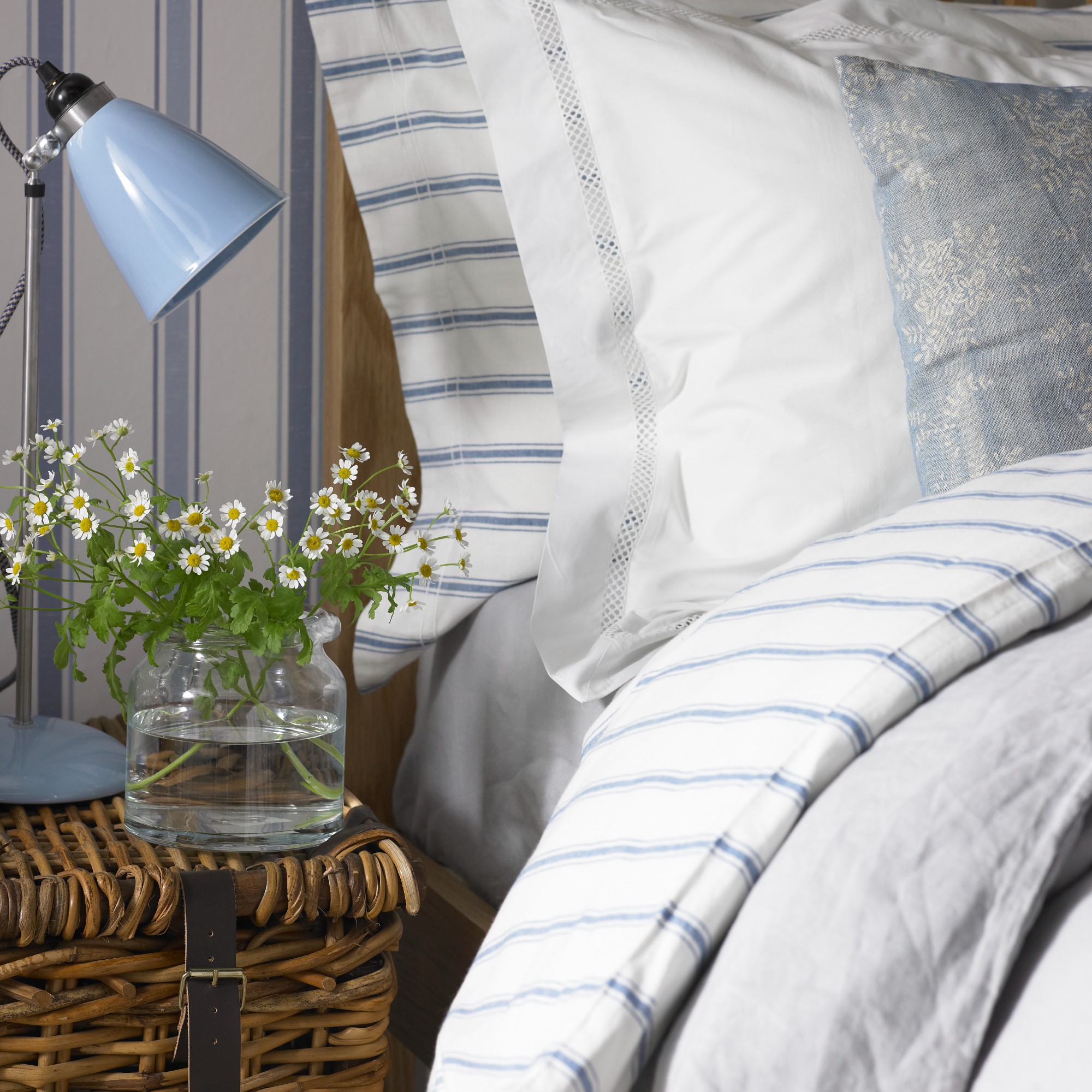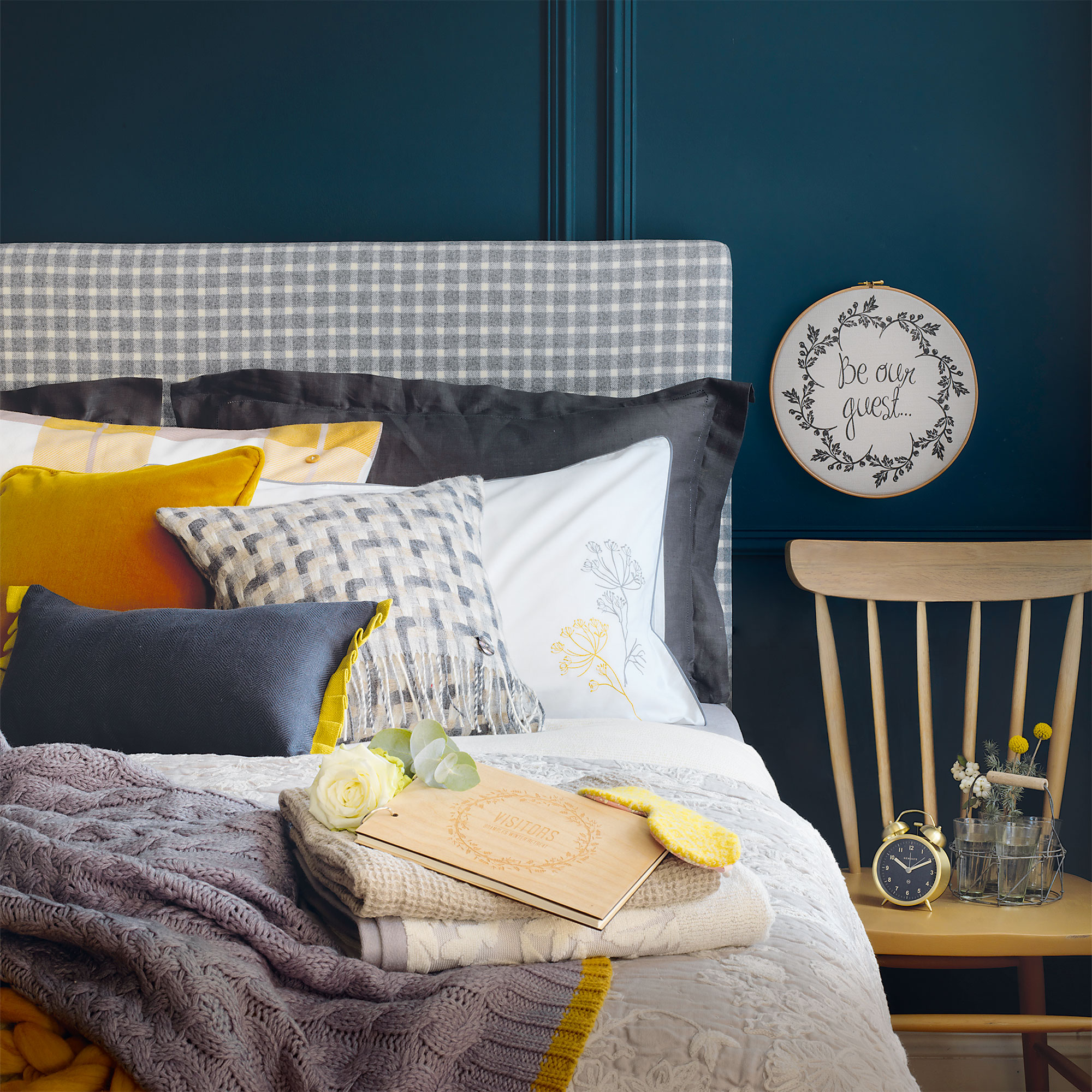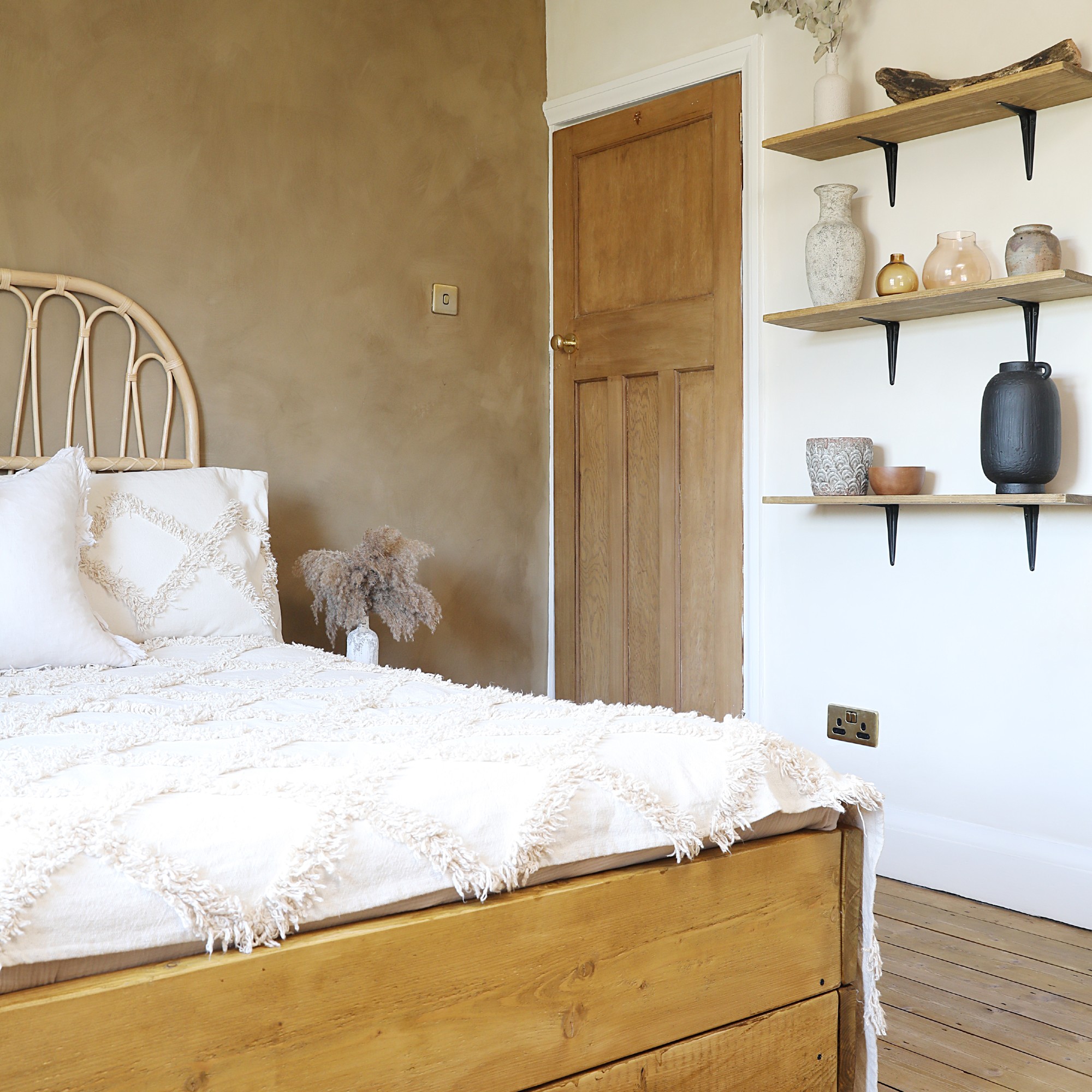
Wondering what's the best filling for a duvet? We're here to help. We all sleep a little bit differently, with different needs and requirements for maximum comfort at night.
The trick to finding the best duvet for your sleep needs is firstly to understand the different filling options, and secondly to determine which one best suits you.
Duvets have to work hard. They need to keep us warm in the winter and help keep us cool in the summer, and the filling has a big impact on how well they can do this. Duvet filling can also impact how easy a duvet is to care for, and how long it lasts.
So, we're here to help you avoid making any duvet buying mistakes by figuring out the best filling for you. From wool duvets for hot sleepers and synthetic duvets for those who prioritise ease of care, we explain the pros and cons of each duvet filling below.
What types of duvet fills are there?
'Duvet fillings vary widely, from synthetic materials like hollowfibre or polyester, which are generally less breathable, to natural options like feather, down, silk, alpaca wool, and sheep’s wool,' explains Dick Beijen, Managing Director, Co-Founder and Co-Owner of Devon Duvets.
When you find your ideal duvet filling it can make all the difference, transforming sweaty and uncomfortable nights into undisturbed sleep and feeling wonderfully rested. Let’s explore the options.

Hollowfibre
Hollowfibre is a synthetic material made from strands of combed polyester. In a hollowfibre duvet, each strand is made with a hole in the middle to trap air. This results in a fluffy, dense, and fuller feeling duvet that’s great at retaining heat.
Hollowfibre is usually the cheapest duvet filling available. Synthetic filling is manmade from petroleum-based chemicals and can be produced at scale in factories. This means labour and materials costs can be kept low.
'A hollowfibre duvet can be a good option for cold sleepers looking for a budget-friendly duvet', says Amy Lockwood, Ideal Home's Sleep Editor. 'Most synthetic duvets can also be washed at high temperatures and tumble-dried, so they're popular with anyone suffering from allergies and those who have pets or children and want bedding that can be cleaned easily'.
'However, hollowfibre lacks breathability, so hot sleepers are likely to find they overheat'.
Plus, hollowfibre is made from non-renewable petrochemicals and doesn't biodegrade easily, so it isn't a great choice for the environment. You might also find a hollowfibre duvet too dense to tuck in around your body easily which can lead to draughts, and they aren't always the most durable option and can flatten over time.
Microfibre
'I think of microfibre as the premium version of hollowfibre', explains Amy. 'It's also a synthetic polyester material, but the polyester strands are combed a lot finer than hollowfibre which results in a lighter, airier, more malleable duvet. A good quality microfibre duvet can almost mimic the feel of a luxury feather and down duvet, but without the use of animal byproducts making it a good choice for a vegan'.
'Like a hollowfibre duvet, a microfibre duvet is also easy to care for as they can generally be machine washed and dried'.
Because microfibre has an airier feel it can sleep cooler than a hollowfibre duvet, but, the synthetic filling does still suffer from a lack of breathability. So you might find a microfibre duvet too hot in the summer or if you're a hot sleeper.
It’s worth noting that as a synthetic, a microfibre duvet filling is not biodegradable and can be difficult to dispose of responsibly at the end of its lifespan.

Feather and down
A natural choice, there are plenty of good reasons a feather and duvet is a classic. Made from duck or goose feathers mixed with the soft and insulating down from the breast of the bird, a feather and down duvet is warm, plumptious, and depending on the down content, usually super light and airy.
'Lower priced duvets will have a higher percentage of feathers, whereas more premium duvets will have a high percentage of down’, explains Neil McMillan, New Product Development Director at bedding brand Slumberdown.
‘The result is a duvet that offers excellent warmth with a lightweight feel, perfect for a comfortable and luxurious night’s sleep’ agrees Danielle Mason, Head of Product Development at The Fine Bedding Company.
A feather and down duvet is also biodegradable so it can be a more environmentally friendly choice, although it's important to look for an option that has ethically sourced materials, such as a Downpass or the Responsible Down Standard. This ensures the down and feathers come from birds that 'have been treated well and never suffer from live-plucking; following the chain of custody from farm to product,’ explain Emily and Jonathan Attwood founders of luxury feather and down bedding brand scooms.
Other than the fact you may not want a duvet that features animal byproducts, the main downsides to a feather and down duvet relate to ease of care. Whilst this filling can be washed, it's a little more labour intensive than washing a synthetic duvet, and your down duvet will also require regular shaking to redistribute the filling.
'Cheaper feather and down duvets can be prone to leaking their filling' adds Ideal Home's Amy. 'At the budget end of the scale, feather and down duvets have a higher feather-to-down ratio which can make them feel clumpy and lead to feather quills sticking through the cover. This is one duvet filling where I'd always suggest a more expensive duvet is worth it, as that usually means a higher down percentage'.

Wool
'As a hot sleeper, after testing several wool-filled duvets I'm definitely a convert' says Ideal Home's Amy Lockwood. 'Wool offers brilliant temperature regulation, so it can magically keep you cosy on cold nights but allow your body heat to dissipate on hot nights for a well-balanced temperature'.
'Wool’s natural temperature-regulating properties are unmatched' agrees Chris Tattersall, sleep expert and managing director of bedding brand Woolroom. 'Wool can absorb up to 30% of its weight in moisture without feeling damp. This moisture management capability ensures that your body remains cool and dry throughout the night. Additionally, wool’s breathability allows for better air circulation, preventing heat from becoming trapped around your body'.
'Wool is also a natural, renewable, and biodegradable material', continues Amy, 'so it's a good choice environmentally'.
The downsides are that wool-filled duvets tend to be expensive, and wool can be tricky to wash. Most wool duvets are spot-clean only or need to be dry cleaned, so they're not the easiest to care for.

How to choose the best duvet fill for you
When it comes to choosing your ideal duvet, it’s important to consider a few key factors. Firstly think about whether you tend to get too hot or too cold at night, or whether you prefer to be on the cooler or warmer side. Next, consider if a thinner duvet would be cosy enough, or if your preference is to snuggle down under a thick and heavy duvet. It’s also a good idea to think about whether you’ll have separate summer and winter duvets too.
Finally, think about any allergies you might have, whether you struggle with sweating during the night and if you have sensitive skin. As you think about all of this, write down a list of features that you need your duvet to have. This should provide you with a checklist when choosing your ideal duvet filling.
It’s also worth thinking about whether you sometimes find you fall asleep comfortably but wake up hot, as Stephanie Romiszewski, Sleep Physiologist & Founder of Sleepy Head Clinic explains, ‘Naturally, we need to go into a bit of a temperature dip in order to successfully fall and stay asleep with good quality.”
'This doesn't mean you need to keep yourself cold, however no matter the time of year, you will need to be mindful that you aren't overheating yourself which will likely lead to an uncomfortable night and feeling less refreshed in general,' Stephanie continues.
'Tog ratings generally run from low (lighter and therefore cooler duvet) to high (heavier and therefore warmer duvet). It's impossible to give an individual a tog rating to work with since we are all so different. Some experimentation may be required, and separate duvets for different times of the year is possible.'

FAQs
What is the best duvet filling for hot sleepers?
If you are a hot sleeper, sleep experts generally recommend avoiding duvets with synthetic fillings, these will only make the problem worse. Instead, opt for a natural and breathable duvet filling, like wool, to stay cool in bed.
'Whether you’re a ‘hot’ or ‘cold’ sleeper, duvets made with 100% natural fillings are ideal for promoting better sleep due to their breathability,' says Dick Beijen from Devon Duvets.
'Research shows that natural, untreated wool is one of the most efficient materials for temperature regulation,' Dick continues. 'Wool works in harmony with both your body and the ambient temperature, helping to maintain a stable core body temperature throughout the night, leading to a more restful and comfortable sleep.'
What is the best duvet filling for allergy sufferers?
Allergy symptoms can often be worse at night, so it’s important to find a duvet that will help to reduce these. A wool duvet is a great option if you suffer from allergies. Naturally hypoallergenic, wool repels dust mites and fungal spores ensuring you have a good night’s sleep. Or, consider a bamboo and synthetic mix.
'Bamboo is a great duvet filling for those suffering from allergies,' suggests Tommy-Joe Reardon, Head of Marketing at Panda London. 'Organic bamboo fibres are naturally antibacterial and hypoallergenic, repelling allergens like dust mites and bacteria which will help you breathe more easily at night'.
What is the best duvet filling for easy-care?
If you’d prefer a duvet to wash at home or a duvet that you can tumble dry, a synthetic duvet is the easiest to care for. A microfibre or hollowfibre duvet can usually be machine washed at a high temperature and tumble dried. That means you can wash, dry, and get your duvet back on the bed on the same day if you need to.
If ease of care is a priority it may be best to avoid wool duvets as they typically need to be dry cleaned. The same goes for feather and down duvets as although some can be machine washed at a low temperature, drying can take more time.
What is the most affordable duvet filling?
If affordability is the most important factor in your duvet hunt, opt for a hollowfibre duvet, or, if you can, stretch to a microfibre duvet for a little added breathability.
Our favourite all-year round duvets
The duvet fill is made from a mix of recycled PET fibres (made from things like plastic bottles).
This 90% Hungarian goose-down all-seasons duvet will instantly upgrade your sleep set-up.







